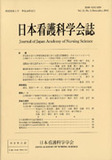Japanese
English
- 販売していません
- Abstract 文献概要
- 参考文献 Reference
要旨
精神障害者をケアする家族34名を対象に,ケア提供上の対処の特徴を明らかにすることを目的として,インタビュー調査を実施した.
データ分析には,質的分析方法である分析的コーディングの技法を用いた.家族の基本的な対処様式として,①障害者と家族双方のニーズが満たされている共栄型,②障害者のニーズを優先する一体型,③家族のニーズを優先する自己保存型,④障害者と家族のニーズどちらも満たされない無力型が析出された.
家族の対処様式は,家族が障害者のニーズに共感的に応じる『家族の応答性』と,家族が家族自身のニーズに配慮する『家族の自己配慮』という二つの軸の組み合わせで説明されると考えられ,家族と障害者双方の生活の質を保障する働きかけの必要性が示唆された.
また,家族には『応答性』と『自己配慮』間の葛藤が潜在し,家族は,ライフサイクル等の影響による葛藤の顕在化に伴い,対処様式間を移動すると考えられた.
Abstract
A qualitative study was conducted to identify an explanatory model which describes coping in family caregiving for relatives with mental illness. Thirty four family members provided written consent to be interviewed. Analysis of data revealed four coping styles in family caregiving.
a) Co-prosperous style: family caregivers empathically attend to needs of the ill relative in addition to their own.
b) Fused style: family caregivers are deeply involved with the ill relative, sometimes at the cost of their own needs.
c) Self-protective style: family caregivers are primarily concerned about their own needs.
d) Demoralized style: needs of both the ill relative and the family caregiver are disregard.
The four styles are explained by “family responsiveness” to the welfare of the ill relative and “family self-nurturing” of their own well-being. Responsiveness and self-nurturing are both high in the co-prosperous style and both low in the demoralized style. Responsiveness is high and self-nurturing is low in the fused style, while responsiveness is low and self-nurturing is high in the self-protective style. Family coping style is not static, and family caregivers move between coping styles to resolve conflicts between family responsiveness and self-nurturing. These findings suggest the need to assist families in finding a balance between responsiveness and self-nurturing. The findings also indicate the importance of improving the well-being of both the ill relative and the family.
Copyright © 2002, Japan Academy of Nursing Science. All rights reserved.


